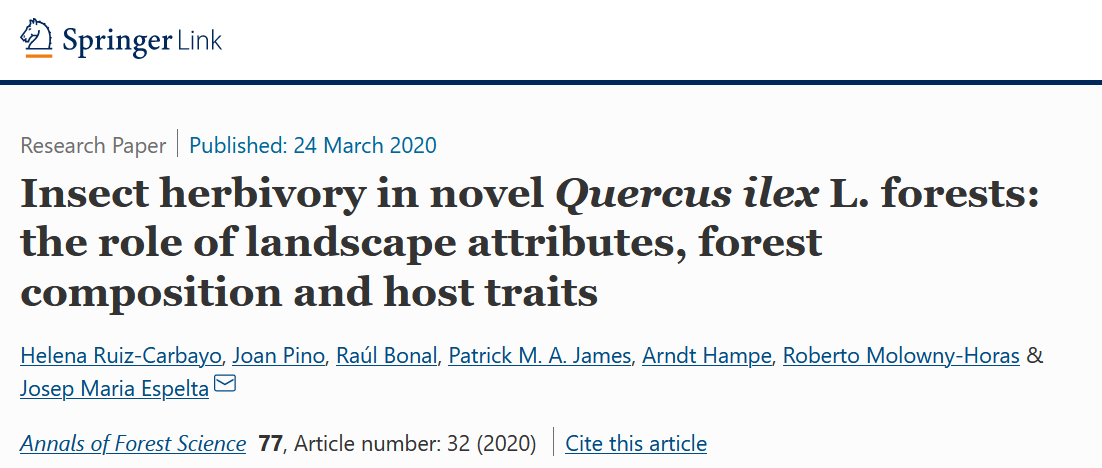Ruiz-Carbayo, H.; Pino, J.; Bonal, R. et al. 2020. “Insect herbivory in novel Quercus ilex L. forests: the role of landscape attributes, forest composition and host traits”. Annals of Forest Science 77.
Abstract
Key message
Insect herbivory in novel Quercus ilex L. forests is a highly context- and scale-dependent process. We show that forest composition, tree height and fine-scale spatial location, as well as tree genetic relatedness and ontogeny, can all influence herbivore activity at local to landscape scale.
Context
Understanding the intrinsic and extrinsic drivers of herbivory in novel expanding forests is essential to envisage their role for biodiversity conservation.
Aims
To analyse the effects of landscape attributes, forest composition, genetic relatedness, ontogeny and leaf traits on insect herbivory in novel Q. ilex forest stands.
Methods
In 15 forest patches, we examined effects of patch size and connectivity, forest composition, tree height, specific leaf area (SLA) and nitrogen content on herbivory. In 3 forest patches, we assessed effects of tree genetic relatedness, ontogeny and spatial distribution.
Results
Herbivory was lower in pine-oak than in mixed-oak forests owing to the shorter tree height in the former with no effects of patch size or connectivity. Herbivory increased with SLA whereas nitrogen content had no effect. Within patches, herbivory differed among genetic clusters and was reduced in saplings growing near mature oaks and individuals near the forest edge.
Conclusion
We illustrate the strong context and scale dependence of tree-herbivore interactions that renders predictions for dynamic systems such as novel oak forests extremely challenging. It implies, however, that the structural heterogeneity of such unmanaged forests allows their function as stepping stones for insect herbivore diversity in fragmented landscapes.

